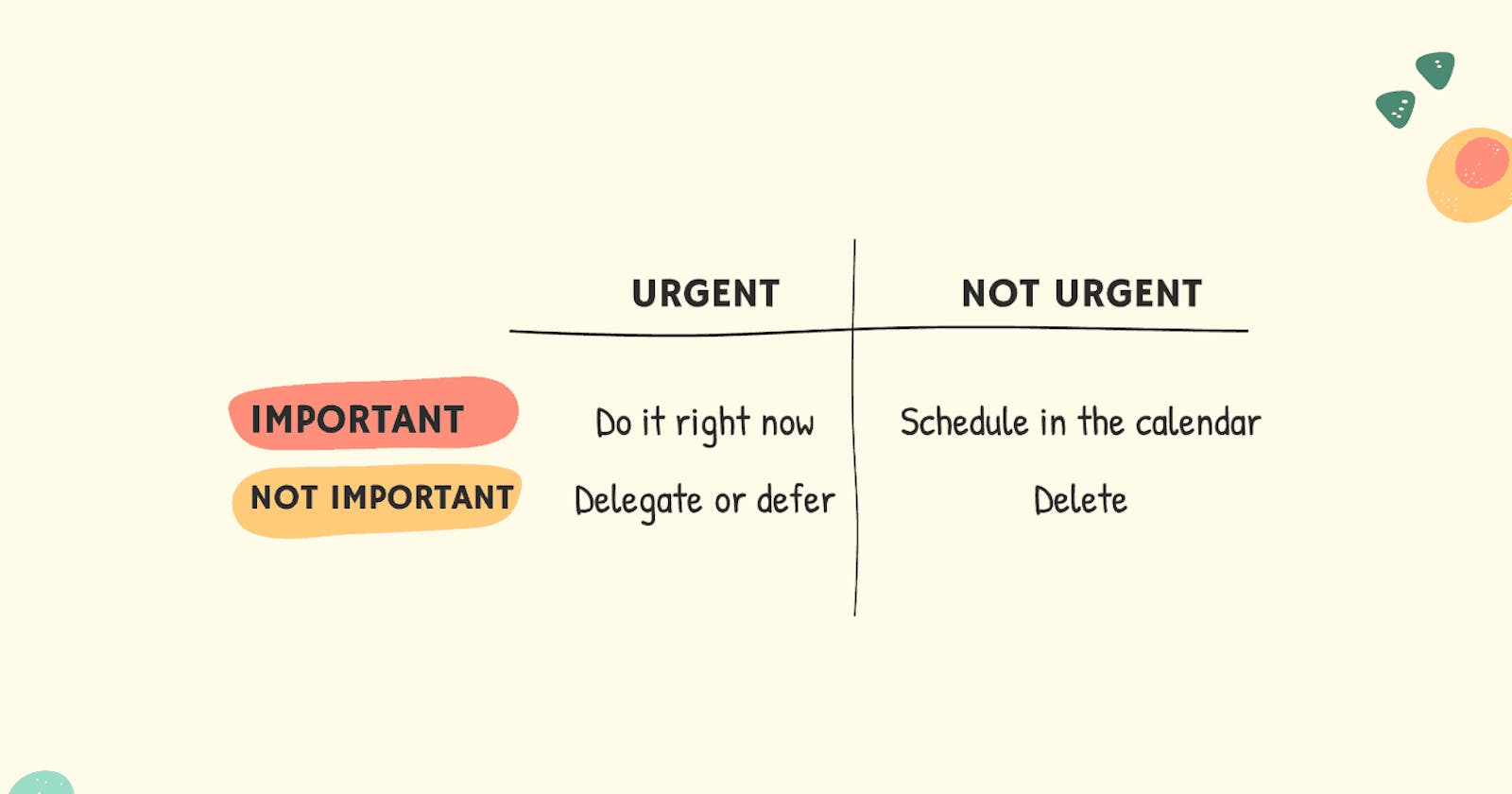A universally applicable yet straightforward to understand tool can help you make sense of task priority. When you are swamped with work, ask this decision matrix for guidance.
Are you familiar with any of the following scenarios?
- We are never doing anything significant, neither benefitting ourselves nor humankind
- We are always firefighting, stressed out, and going through mental trauma
- We are doing considerable work but never on time, so we are missing out on the rewards
Instead, we should be doing substantial work at the right time so that both you and humankind are benefitted from your work. The question is, how.
The four quadrants
Let us explore the types of tasks we do and put them into the Eisenhower decision matrix. This matrix is built around two fundamental aspects. How urgent and important the task at hand is? Two aspects form a four-quadrant matrix. Before we dive into the quadrants, a small note of both urgency and importance might change over time, so revise this matrix periodically.
Not urgent, not important:
Tasks that are neither urgent nor important, get rid of them from your task board. These are time-wasting activities and add no value to the quality of life and humankind—examples: living inside Tiktok, futile online quarrels.
Not urgent, but important:
Tasks that do not need to be done right away but important are going to become urgent somedays. Before that happens, it is always good to plan and schedule it to get it done; for example, exercise and taking care of health before it becomes an urgent matter. If you spend more of your day here, you are doing considerable work, but never on time, so you don't reap what you sow.
Urgent, but not important:
Do one thing at a time and do it well. Not everything urgent has to be done by yourself. If a task has no dramatic value contribution by doing it yourself but needs to be done now, try and find someone or a service that can achieve the same effect and delegate. If your days are spent in this, you spend time on other people's "urgent and important" quadrant, possibly struggling with your own "urgent and important" tasks. You are always stressed out.
Urgent and important:
You need to carry out tasks that are both urgent and important right away. You should spend your day in this quadrant.
For Engineers:
Don't underestimate the engineering urgency. If something is burning or about to crash and burn, make sure management understands its gravity, ideally before it happens. Help management with this tool as to where the team should be focusing. For instance, educate them if you don't tackle a critical technical debt now, how it will affect the business in coming sprints or quarters.
For Managers:
It is not uncommon that engineers might want to pursue their sense of priority. For example, they are inclined towards refactoring over feature development and pre-mature or over-optimization over release. They are neither always right nor wrong. If there is a misalignment of focus between engineers and managers, it is a sign that engineering concerns haven't been addressed adequately in this tool. Listen more to them and make sure their concerns are visible in the Eisenhower matrix.
For the CTO:
Your job as a CTO is making sure everybody makes sensible decisions. You will not be around in all kinds of decisions made throughout the day by your teams, but it is guaranteed that the aftermath of less-than-ideal decisions will bite you back. Identify if any team is demonstrating any of the traits discussed at the beginning of this post.
Are they never doing anything significant, are they always firefighting, are they doing considerable work but always missing the sweet timing? Champion Eisenhower matrix in the prioritization process, then let them have hard evidence supporting their priorities.
Eisenhower was the 34th president of the United States, and he devised this decision matrix for prioritization.

